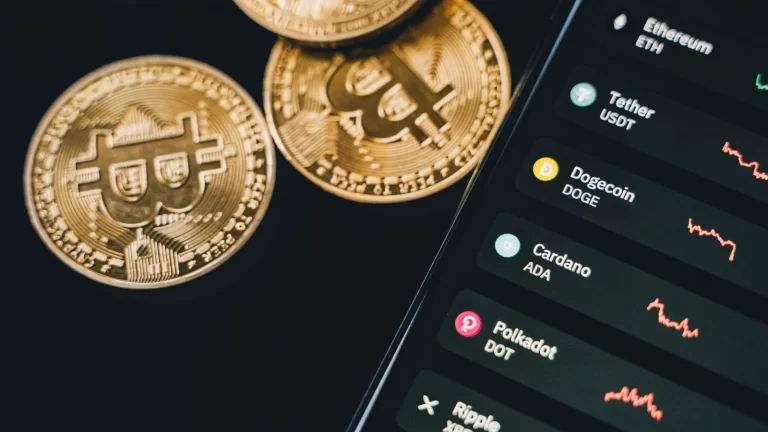What is Tether (USDT)?

What is Tether (USDT) explained simply
The introduction of stablecoins into the digital currency space brought a solution to the high volatility problems of digital tokens. While this solves many problems, certain disadvantages are associated with stablecoins, for instance, they are often controlled by centralised entities. This article is going to give you a brief overview of one of the most popular, widely used, and certainly controversial stablecoin – Tether (USDT).
The volatility of cryptocurrencies make them unattractive as a means of value transfer for day-to-day transactions. This is the main problem stablecoins solve. Tether (USDT) is pegged 1:1 to the US$ so that 1 USDT can be redeemed for 1 USD.
The USDT Value Proposition
Tether is a stablecoin intended to make digital currencies a viable form of payment as it is pegged in values equivalent to traditional currencies like dollar, pound, or yen. This is a new class of cryptocurrency founded to ensure price stability, compared to volatile digital currencies such as Bitcoin and Ether which can experience huge fluctuations within short time frames. The motive for its creation is to serve in place of paper currencies rather than to serve as a digital token or currency that will either appreciate or depreciate in value. However, stablecoins like USDT are great for earning interest on through platforms such as Nexo and Compound or on exchanges like Binance or OKEx.
An in-depth look into Tether makes us understand that it is regarded as a collateralized stablecoin. When comparing this to the crypto-collateralized stablecoins, these classes are backed by cryptocurrency rather than the fiat currency, which Tether value is pegged to. Crypto-collateralized coins make use of software programs and codes to evaluate the supply and values at which they should be sold.
Even though it identifies as a digital currency, Tether can be differentiated from the rest – it was developed by a company instead of a network.
Structure & Technology
Tether Ltd., an organization situated in the heart of Hong-Kong, is responsible for sealing up traditional currencies, which are currently backing all Tether coins being issued; thus, making it an important intermediary. iFinex Inc. currently controls Bitfinex and Tether’s operations.
Tether tokens exist as digital tokens built on bitcoin (Omni and Liquid Protocol), Ethereum, EOS, Tron, Algorand, BCH and OMG blockchains. These transport protocols consist of open source software that interface with blockchains to allow the issuance and redemption of cryptocurrency tokens, in this case, “tethers.”
USDT was originally created to use the Bitcoin network as its transport protocol—specifically, the Omni Layer—to allow transactions of tokenised traditional currency. Since this original version of Tether token uses the Bitcoin blockchain, it inherits the inherent stability and security of the longest established blockchain network.
Tether token on the Ethereum blockchain, as an ERC20 token, is a newer transport layer, which now makes tether available in Ethereum smart contracts or decentralised applications on Ethereum. As a standard ERC20 token it can also be sent to any Ethereum address.
Since Tether (USDT) tokens are currently available using different transport protocols, when users send Tether tokens to other addresses, they need to carefully check the destination address to confirm they are selecting the correct transport protocol.
Allegations & Controversy
A publication by Coin Metrics shed more light on the operation of Tether and its usage. From the report, we understand that about 318 users own a larger portion of these tokens, with each Tether user holding about $1 million USDT or more.
This is quite alarming that a few people control the activities of the coin on the market. Furthermore, it is being speculated that prices of Bitcoin have a way of being manipulated through Tether as according to some analysts. A group of large holders in Tether known as Tether Mafia were assumed to have manipulated prices in the past, with Bitcoin getting a drop to about $6000 from $20,000 in the space of 30 days.
Tether is called a stablecoin because its value is supposed to be fixed at 1 tether to 1 dollar. It makes trading easier, because most banks won’t exchange cryptocurrencies for dollars. Around 60% of bitcoin transactions happen in tethers.
Looking ahead…
Its status as one of the leading stablecoin in the cryptocurrency industry is not without controversy regarding its working process and whether or not it is legit. These issues started when the New York Attorney General’s office opened investigations into an $850 million loss by Bitfinex that got lost or impounded by its payment merchant Crypto Capital.
The legal suit saw the Attorney General’s office accuse the crypto firm of hiding funds. The court addressed this case and, with the investigation, claimed there was collusion between Bitfinex and Tether Ltd. in a bid to borrow from Tether’s reserves.
Although there have been efforts by iFinex to have the case dismissed, this was futile, and this implies that The NYAG will have a deeper dive into the matter and the crypto firm would need to buckle up for the coming days as there’s uncertainty on what the final verdict of the court would be.
It is alleged that Tether Ltd mints new coins without having full cash reserves to back them up. It’s under investigation by the Commodity Futures Trading Commission, the U.S. Department of Justice, and the New York State Attorney General seeking to enforce an investigative subpoena under New York’s expansive Martin Act against cryptocurrency exchange Bitfinex and its affiliated companies that issue the Tether stablecoin. Due to all of this, Tether’s instability is considered a huge risk — not just to Bitcoin but to the entire cryptocurrency market.





